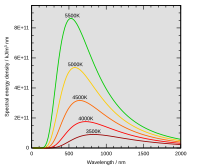
Photo from wikipedia
In the framework of laser-matter interaction and nonlinear Thomson scattering, we investigate the three-dimensional (3D) motion trajectories and spatial radiation characteristics of the colliding motion electrons with tightly focused circularly… Click to show full abstract
In the framework of laser-matter interaction and nonlinear Thomson scattering, we investigate the three-dimensional (3D) motion trajectories and spatial radiation characteristics of the colliding motion electrons with tightly focused circularly polarized Gaussian pulses at different intensities. Combined with the 3D spatial images and the analysis of specific two-dimensional unfolded images, we discover that the amplitude of the motion trajectory increases steadily with increasing laser intensity, the peak radiation power increases rapidly, and the peak radiation azimuth decreases slowly. In addition, by studying the electron motion under the high-intensity ( 10$?> a0>10 ) laser field, we find that the electron motion is retrograde twice when interacting with pulsed laser once. Lastly, by extracting the direction and energy of spatial radiation, we indicate that the existence of a specific laser intensity can make the peak radiation azimuth θm=90∘ and which intienity provides the maximum conversion rate of laser energy to the peak power of radiation.
Journal Title: Laser Physics
Year Published: 2021
Link to full text (if available)
Share on Social Media: Sign Up to like & get
recommendations!